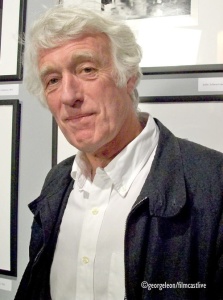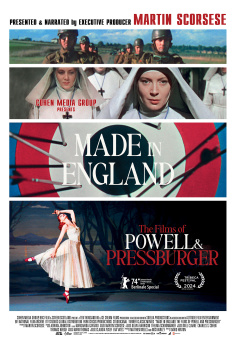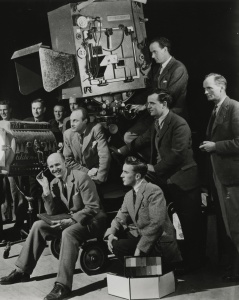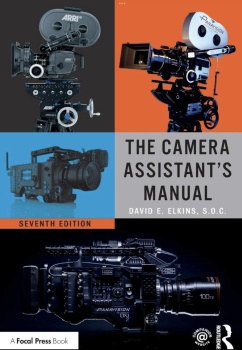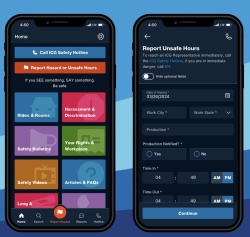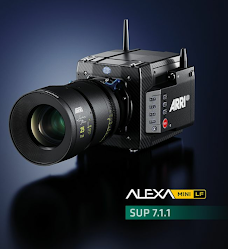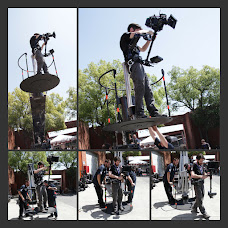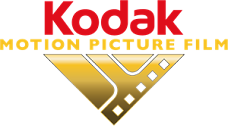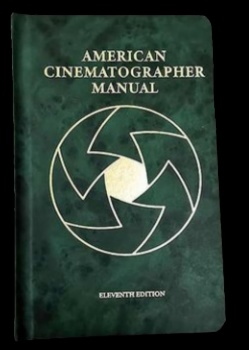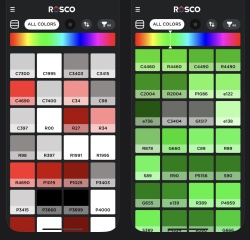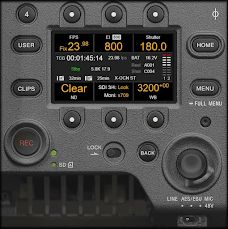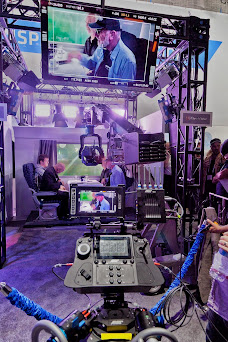
THE CAMERAS TO SEE AT 2014 NAB SHOW

LIES AND DECEIT IN COLOR. THE SEVENTH LIE.
Review
The Seventh Lie is the feature film directorial debut of James Hung. The Seventh Lie is a fresh departure from the light fare of many dramatic and action Chinese films on the international film market by compelling the audience to participate vicariously on an elliptical narrative presenting intertwined individual complex plots in a seamless linear manner.
Hung selected chaotic Hong Kong as the backdrop landscape to frame this dramatic dark narrative of the human condition into a series of four vignettes about the decay and downward spiral of truth and honesty as known by society into a web of lies, deception and betrayal through the eyes of an ensemble cast of flawed characters interconnected to each other on the different vignettes by a common denominator, what it seems to be similar to the famous seven sins, namely wrath, greed, lust, and envy. Corruption, contempt and the twisting of the word are the driving force on the narrative of this tale, but regardless of moments of despicable betray, redemption and a new found honesty prevails at the end.
(password: doyoulie)
The very physical and quasi-comedic performance of the cast comprised by Hong Kong top caliber actors (Josie Ho, Ronald Cheng, Loi Hong Pang and Wai Kai Leung Tommy) portraying assassins, cheating couples, corrupted policemen, disgruntled spouses, sexual deviants, runaway brides and a redeeming psychic are the right catalyst to this mixed-genre narrative as written and directed by Hung, who also utilized claustrophobic locations such as hotels rooms and hallways to determining time, landscape and space as another character to tell the story. (Hotels rooms in Hong Kong are rather small in contrast to the urban architectural grandeur displayed by the city).
The cinematography by Ka On Ronnie Au and production design by Rose Hung worked seemingly with Hung's vision. The photography and art design (Janet Chan) of every location/vignette is under its own color palette, running from a clean surgical steel look (while an assassin is choosing which tailored suit, shirt, and tie to wear before going out to kill again) to the warm tungsten glowy look of a runaway bride perplexed by the possibilities of her own future while hiding from her future husband and bride maids crisscrossing the city under the neon and traffic lights to a final rendezvous with a prophetic psychic on an idyllic park illuminated with colorful china balls and lanterns.
The low budget film was shot on a single Canon 1DC with Canon cinema lenses and recorded to SanDisk’s Extreme Pro CFast 2.0 cards.
LIGHTING FOR A LEGEND & CONFIGURATION OF THE EOS C500 PL
As originally published on September 4, 2013 in ASC Parallax View by David Heuring
with the exception of two still photos credited to other source.
For the time being, Rodrigo is shooting commercials and enjoying some time close to home.
Canon Collaborations: The EOS C500 Configured by the Crew of Human Voice
BEST CINEMATOGRAPHY NOMINEES FOR THE 86TH OSCARS
BEST CINEMATOGRAPHY NOMINEES FOR THE 86TH OSCARS®
Fujifilm informed him and Mr. Le Sourd, that it would be delivering the company’s final roll to them but Le Sourd isn't absolutist about celluloid. "I think everything is possible on digital," he says. "‘Gravity' is amazing work and we couldn't do it before. It's a great adventure today to be a working cinematographer."
A GUIDE TO HAND HELD CAMERA OPERATION W/ SEAN BOBBIT, BSC
A Guide to Handheld Camera Operating with Sean Bobbitt, BSC, from the ARRI Workshop at this year's Camerimage Film Festival. This is a must see presentation for all cameraman. Enjoy!
CINEMATOGRAPHERS ROUNDTABLE
FUJIFILM RELEASES A NEW LENS. THE CABRIO 19-90MM
Videographers used to shooting video in a typical ENG-style will be very comfortable with the servo. Cinematographers will also be right at home with this lens. With the detachable drive removed, the lens is set to accept industry standard cine motors and matte boxes. Plus, the lens has all the lens data output that appeals to a Cine-style shooter. LDS and /i metadata compatibility is very useful when you want to record the position information of zoom, iris and focus for computer animation and other uses.
The digital servo on the 19-90mm Cabrio has 16-bit encoding, so operators can be assured that all lens data output is extremely accurate.
The 19-90mm covers 31.5mm sensor size on a digital cinema style camera. While sensors on standard broadcast cameras are all the same size, sensors on digital cine cameras vary greatly. This new zoom ensures the image captured will cover large sensors for optimal, full-frame resolution. A nine-blade iris part of the design as well, creating the most natural-looking imagery possible.
Barrel markings are luminous for visibility in dark shooting situations. Distances are listed in feet or meters and can be changed in the field.
The 19-90mm can be controlled using cinema industry standard wireless controllers, as well as existing Fujinon wired and wireless units. Whether you are from a film background or a video one, the Premier PL 19-90 offers uncompromising quality and unprecedented flexibility.
PANAVISION UNVEILS NEW PRIMO V LENSES OPTIMIZED FOR DIGITAL CAMERAS
Panavision
CINE METER APP FOR iOS 5
In the past I have provide you with resource lists of iOS and Android applications for the cinematographer, some still are free offering basic software and others are paid, offering more professional software like the Depth of Field (DOF) Calculator that can help you get a job done a little better or a little faster than before.
The false-color picture lets you define allowable contrast ranges, and see instantly which shadows are underexposed and what highlights risk clipping:
How To...
Check exposure: aim the camera at the scene, and read off the exposure (use the spot meter if necessary to narrow down the area of interest). You can tap EXP to freeze the reading, and then vary ISO and shutter to see how aperture changes even if you are no longer pointing the camera at the scene.
Compare exposures: aim the camera at a gray card or other reference target, and tap EXP. Cine Meter will hold that exposure, letting you walk around the set and look at the waveform monitor and false-color displays to compare light levels to your reference.
Compare white balances: aim the camera at a white or gray card under your reference lighting, and tap EXP to lock the white balance. Cine Meter will hold that white balance, and you can use the RGB mode of the waveform monitor to examine the color balance as you walk around the set. (The range of color temperatures and lighting spectra that Cine Meter will properly white balance to is entirely dependent on the camera in your iDevice: some accommodate a wider range of white points than others do.)
Check lighting evenness: when you need flat, even lighting (on a greenscreen, white cove, test charts, or flat art), Cine Meter’s waveform monitor shows you the relative light levels across the camera’s field of view in a single glance. It’s a lot quicker to use the waveform monitor than to spot-meter several points across the field of view, or to take multiple incident readings to get the same information.
Match color temperatures: using WB and the RGB waveform monitor makes it very simple to compare LCD displays, different LED lights, or any other combinations of radiant or reflected lights. If you use WB on a known-good source (or a white card illuminated by it), the differing RGB levels when looking at another source will indicate how you have to color-correct it to make it match, without the subjectivity of the human eye.
more how to...
SEAMUS MCGARVEY, ASC BSC AT GCI
©georgeleon/filmcastlive 2013
PANASONIC LAUNCHES A NEW AFFORDABLE HD CAMERA
The lightweight but powerful AC8PJ camcorder is ideal for shooting corporate and events, weddings and documentaries and action packed sporting events, boasting 720p at 8Mbps. The camera weights 5lbs offering less shoulder strain for long shooting periods.

for more info visit Panasonic
SAN DISK INTRODUCED THE FASTEST CF CARD
ARRI UNVEILED AMIRA. A NEW DOCUMENTARY STYLE CAMERA
ibc 2013
ARRI SHOWS PROTOTYPE RGB+Z CAMERA AT IBC 2013
By delivering synchronized video data and depth data, the camera will permit video images to be manipulated in the same way as CGI. Work by project partners will allow CGI models to be animated “with all the naturalism of real actors and real locations”. It is presented by Thomas Hach.
Dr Johannes Steurer, Arri’s principal research & development engineer, explained: “Even though it is still a prototype we are confident that the post production industry will be highly interested in the new possibilities this technology offers. Compositing, color grading, keying and many more post tasks can be facilitated by our new camera.
“It provides cutting-edge, high resolution RGB images with fully synchronized depth maps, where both are taken through the same lens and hence feature a parallax-free 3D image of the scene.”
View Arri's timetable at IBC Big Screen
CANON EOS-1DC. THE FIRST HD TIER 1 DSRL
The 4K capable camera is the first DSLR to meet the EBU Tech 3335 requirements that show it delivers an image of high enough quality for broadcast production.The camera was specifically designed for motion picture capture has been tested and approved by the European Broadcasting Union (EBU) for HD content acquisition. It's the first DSLR to get on the EBU's list as a camera of high enough quality for use as a broadcast production tool.
http://tech.ebu.ch/camtest
MASTER WORKSHOP ON DIGITAL CINEMATOGRAPHY IN VENEZUELA
The “Master Workshop on Digital Cinematography” will take place between September 2-15, 2013, in
the city of Caracas, as a technical module part of the “First
Certification Program for Directors of Photography”, promoted by the Venezuelan Cinematography Society (SVC for its Spanish initials), with the support of the Autonomous National Center for Venezuelan Cinematography (CNAC for its Spanish initials) and based on the academic platform of the recently founded School for Cinematographic Technicians José Manuel Funes.


























































